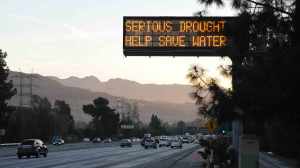Gov. Jerry Brown renewed his call for Californians to conserve water on Friday as the entire state was in drought for the first time in at least 15 years, according to a federal report released this week.

With southeast California considered in moderate drought, all regions of the nation’s most populous state are in drought conditions, according to the weekly U.S. Drought Monitor report, which was released Thursday.
On Friday, Gov. Jerry Brown issued an executive order urging Californians and businesses in the state to limit lawn watering and irrigation of parks, schools and golf courses. Brown also urged residents to wash their cars less and asked restaurants only to serve water when it’s requested.
Homeowner associations may no longer fine residents who limit their lawn-watering or take other conservation measures, under the executive order.
Brown declared a “drought state of emergency” in January.
Mountain snowpack, which provides much of California’s water, was at 16 percent of normal for the date, according to Friday’s data.

The federal drought data marked the first time in the 15-year history of the U.S. Drought Monitor that all of California has been in drought, according to the report, produced by the National Drought Mitigation Center in conjunction with the National Oceanic and Atmospheric Administration and other federal agencies.
Weekly reports from the U.S. Drought Monitor first began in 1999, according to the center’s website.
“The frustration caused by the drought can be seen in a report by an observer in Siskiyou County,” the report stated, quoting the observer, “‘Our snow pack is pathetic, rainfall is way below normal, (low) stream flows are running at two to three months ahead of normal depending on the area, well levels have dropped severely and many wells are dry in spring or have levels typical of late fall, surface water irrigation supplies are non-existent to extremely limited in many areas, and the situation is only getting worse daily (especially after three consecutive years of drought).'”
Much of the Central Valley and the Bay Area was under an “exception drought,” the worst category.
In Southern California, most of Los Angeles and Ventura counties were in the next-worst category, extreme drought, as was all of Orange County and in the western areas of Riverside and San Bernardino counties.






